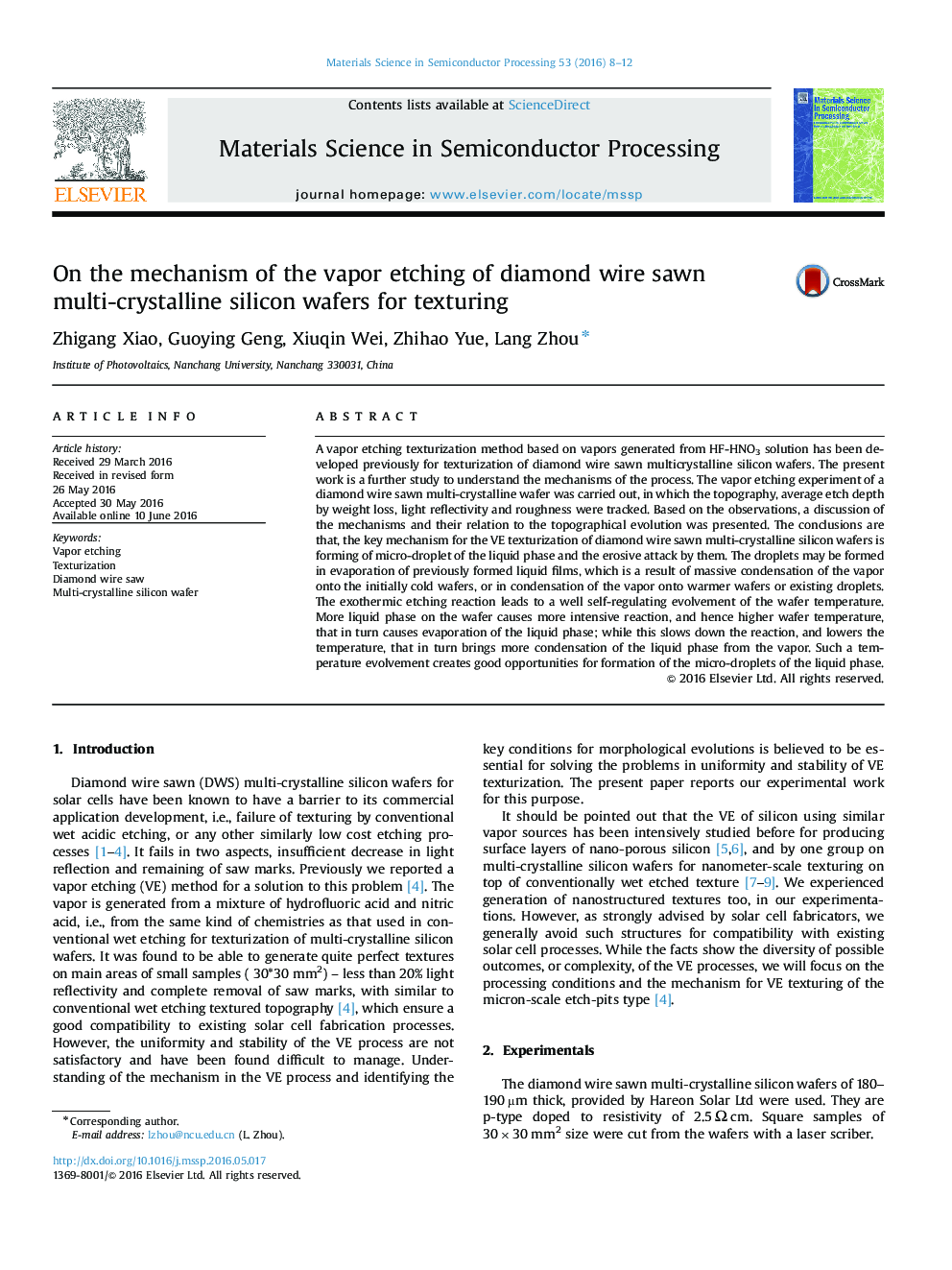| Article ID | Journal | Published Year | Pages | File Type |
|---|---|---|---|---|
| 727791 | Materials Science in Semiconductor Processing | 2016 | 5 Pages |
A vapor etching texturization method based on vapors generated from HF-HNO3 solution has been developed previously for texturization of diamond wire sawn multicrystalline silicon wafers. The present work is a further study to understand the mechanisms of the process. The vapor etching experiment of a diamond wire sawn multi-crystalline wafer was carried out, in which the topography, average etch depth by weight loss, light reflectivity and roughness were tracked. Based on the observations, a discussion of the mechanisms and their relation to the topographical evolution was presented. The conclusions are that, the key mechanism for the VE texturization of diamond wire sawn multi-crystalline silicon wafers is forming of micro-droplet of the liquid phase and the erosive attack by them. The droplets may be formed in evaporation of previously formed liquid films, which is a result of massive condensation of the vapor onto the initially cold wafers, or in condensation of the vapor onto warmer wafers or existing droplets. The exothermic etching reaction leads to a well self-regulating evolvement of the wafer temperature. More liquid phase on the wafer causes more intensive reaction, and hence higher wafer temperature, that in turn causes evaporation of the liquid phase; while this slows down the reaction, and lowers the temperature, that in turn brings more condensation of the liquid phase from the vapor. Such a temperature evolvement creates good opportunities for formation of the micro-droplets of the liquid phase.
